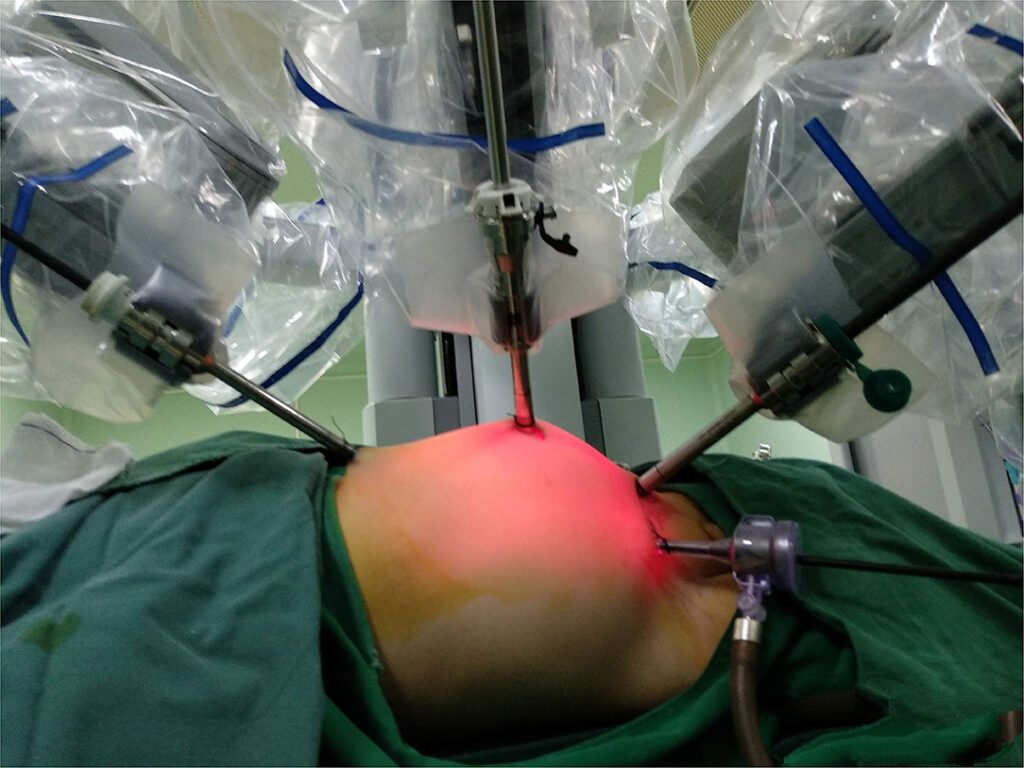Laparoscopic Pyeloplasty (Ureter Blockage Treatment)

What Is Laparoscopic Pyeloplasty?
Laparoscopic pyeloplasty is a minimally invasive surgery used to correct a blockage between the kidney and the ureter, known as ureteropelvic junction (UPJ) obstruction. This condition prevents urine from draining properly, which can lead to kidney swelling, pain, infection, or long-term kidney damage.
At A1 Laparoscopy Hospital, our specialists perform this surgery using keyhole incisions for faster recovery and minimal discomfort.
Why Does Ureter Blockage Happen?
A blockage at the ureteropelvic junction may be:
- Present from birth (congenital)
- Caused by kidney stones or previous surgeries
- Due to crossing blood vessels or scarring
- Linked to infections or inflammation
If left untreated, it can lead to hydronephrosis (kidney swelling) or permanent kidney damage.
Symptoms of UPJ Obstruction
You may need pyeloplasty if you experience:
- Flank pain or dull ache near the lower ribs
- Repeated urinary tract infections (UTIs)
- Nausea or vomiting, especially after drinking fluids
- Blood in urine (hematuria)
- Reduced kidney function (seen in tests)
How the Surgery Works
At A1 Laparoscopy Hospital, laparoscopic pyeloplasty is performed under general anesthesia using advanced techniques. Here’s what happens:
- Small incisions are made in the abdomen
- A laparoscope (camera) is inserted for clear visualization
- The obstructed area of the ureter is cut and reconstructed
- The healthy ends are reattached to allow free urine flow
- A stent (small tube) may be placed temporarily to support healing
The procedure usually takes 2 to 3 hours, and most patients are discharged within 2–3 days.
Benefits of Laparoscopic Pyeloplasty
Compared to traditional open surgery, laparoscopic pyeloplasty offers several advantages:
- Smaller incisions and less pain
- Minimal blood loss
- Shorter hospital stay
- Faster return to normal activity
- Lower risk of infection
- Excellent long-term success rate
Why Choose A1 Laparoscopy Hospital?
We combine advanced surgical care with compassionate support:
- Skilled Uro-Laparoscopic Surgeons: Experts in treating complex ureteric conditions
- Full Hospital Setup: In-house diagnostics, ICU, pharmacy, and anesthesia
- High-Precision Tools: State-of-the-art laparoscopic equipment
- Affordable Packages: Transparent and accessible pricing
- Post-Surgical Care: Regular follow-ups and stent removal if needed
Recovery After Surgery
Most patients recover quickly with proper care:
- Hospital stay: 2 to 3 days
- Resume light activity: Within 1 week
- Full recovery: 3 to 4 weeks
- Stent removal (if placed): Usually after 4 to 6 weeks
- Imaging follow-up: Ultrasound or scan to check kidney drainage
Our care team will guide you through every step of recovery with personalized attention.
Frequently Asked Questions
Q. Will I have scars?
Ans: Only small, keyhole marks that fade over time.
Q. Is the surgery painful?
Ans: Minimal pain is expected after surgery and is well-managed with medication.
Q. Will the blockage come back?
Ans: The success rate of laparoscopic pyeloplasty is over 95%. Recurrence is rare.
Q. What if both kidneys are affected?
Ans: Each kidney is treated one at a time, based on its function and severity.
